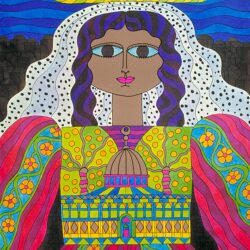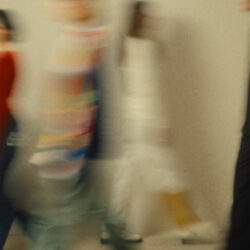Martin Margiela

The work of Martin Margiela, with its many references to the history of fashion and dressmaking, forms an important part of the MoMu collection. In 2008, the museum devoted an exhibition to the 20th anniversary of Maison Martin Margiela, followed by Margiela, The Hermès Years in 2017.
Martin Margiela graduated from the fashion department of the Academy of Fine Arts in Antwerp in 1980. From 1984 to 1987 he was assistant to the French fashion designer Jean Paul Gaultier. In 1988, together with Jenny Meirens, he founded Maison Martin Margiela in Paris. Margiela’s unique approach interrogates the very system on which fashion is founded, more particularly the volatility and speed that is inherent to it. His collections conceptualize the idea of time by recycling all sorts of materials, such as plastic, porcelain and vintage clothing, but also by clearly visualizing the production process and the time it consumes. From 1997 to 2003, Martin Margiela designed the women’s collections for the French luxury brand, Hermès. Based on his respect for superb craftsmanship, he developed a slowly evolving wardrobe for Hermès in which comfort and quality are central. When he left Maison Martin Margiela in 2009, the house continued operating under the leadership of the creative team until John Galliano was appointed creative director in 2014.
DECONSTRUCTED TAILORING

DRAPERY
In the 1996 Spring-Summer collection, the Stockman tailor’s mannequin formed the basis for every silhouette. For example, Margiela attached a bustier in black muslin to a black-and-white elastic band. Margiela learned culture drapery techniques from Hieron Pessers, former studio manager for Hubert de Givenchy and drapery teacher at the fashion department of the Royal Academy of Fine Arts in Antwerp.


Maison Martin Margiela intentionally makes traces of the process of producing his clothing visible, revealing seams, linings, white overlock stitches and shoulder pads. This often concerns traditional dressmaking techniques and interventions that are expressly intended to conform the individual body as closely as possible to the standard shape of the tailor’s mannequin. In 1997-98, these classic mannequins were the starting point for two collections in which jackets formed replicas of those bodice shapes.
RETHINKING THE ARCHETYPE
Maison Martin Margiela reinterprets archetypal articles of clothing from the Western wardrobe, such as the trench coat, the tuxedo and the white shirt, with meticulous expertise. By way of the Replica Line, which reproduces vintage apparel pieces, and the Artisan Collection, comprised of unique, time-consuming pieces, the Maison pays homage to the craftsmanship of the past. The standardized body shape on which fashion is based also fascinates the designer. Diverse collections include oversized clothing and/or play with disproportion.
CHARACTER SHOULDERS

Autumn-Winter 2007-08, leather cape with shoulder pads, padlock chain covered in jersey and boots covered with voile

Martin Margiela, Autumn-Winter 2007-08 Autumn-Winter 2008-09, black jacket with conical shoulder line and loose-fitting, padded stand-up collar

Martin Margiela, Autumn-Winter 2008-09
Through the years, Margiela silhouettes underwent striking changes. At the end of the 1980s, the Maison innovated the ‘cigarette’ shoulder pad, set high on the shoulder. As a result, the actual shoulder of the wearer was underneath the pronounced shoulder inset. In early 2000, the shoulders would broaden and subsequently become rounded and raised. From the Spring-Summer collection of 2007, they took on extreme proportions, reaching a conically shaped climax in the Autumn-Winter collection of 2008-09.
TROMPE L’OEIL IN VALUES OF GREY

TOTAL CONCEPT
In the interiors of his office and shops as well, Margiela creates optical illusions by integrating black-and-white photographs of 18th-century interior elements.


Margiela makes generous use of trompe-l’oeil motifs in his collections. For his 1996 Spring-Summer collection, he printed simple dresses in flowing fabrics with photographs of other articles of clothing.
INCOGNITO
Despite the unmistakable stamp of identity in his work, from the beginning of his career, Margiela kept himself invisible. Interviews take place in the name of the Maison and photographs of the designer are rare. Maison Martin Margiela carries this incognito approach through in a radical way in the presentations of the collections. The models become anonymous, through veils, make-up or wigs that partially or fully cover the face. In the lookbooks, black bands cover the eyes.


This choice for anonymity is also translated into the labels on the garments: empty cotton rectangles that are sewn in by hand. The four white stitches visible on the outside of the garments have become a well-recognized signature.
Author: Romy Cockx
Photo above: Ronald Stoops

























